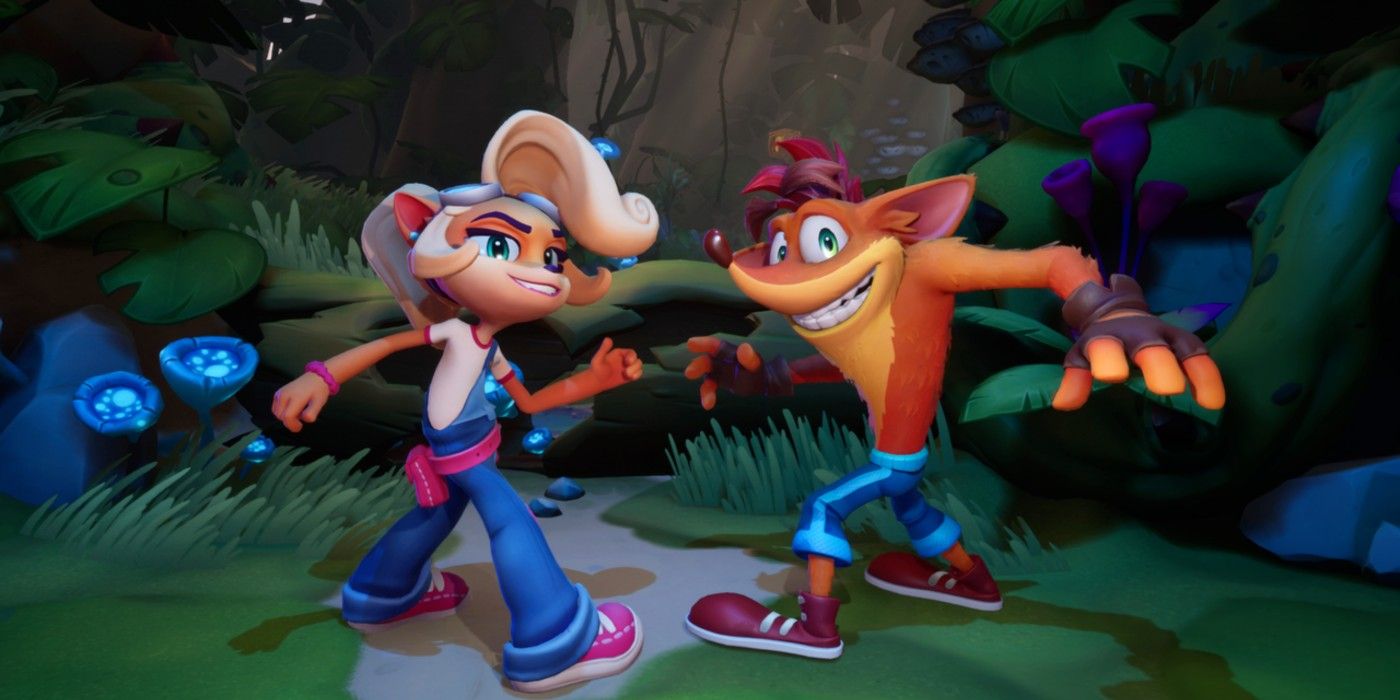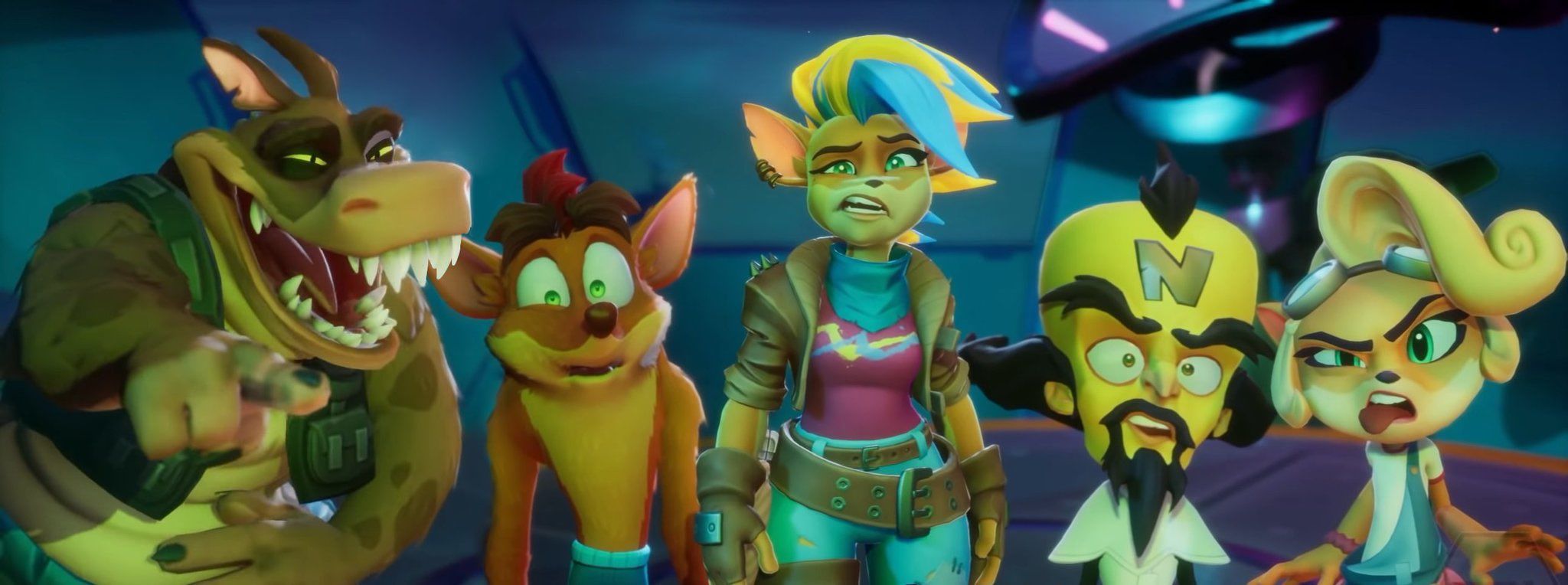Over the past couple of years, Activision Blizzard has made quite the effort in electrifying life back into the presumed dead Bandicoots of the 90's. Between remaking the original Crash Bandicoot trilogy and its cult favorite spinoff kart-racer, the stage was set to unleash Crash Bandicoot 4: It's About Time onto the world (not to mention a mobile runner game that coincided with the sequel's launch). With a fresh art style and surprisingly animated story beats, this "canonical" addition to the series hasn't just been a reminder that there's not quite any platforming games out there like Crash, but that some reimagining of the cast lends itself well to an original, spunky take on animated cartoon characters.
While it was rumored to be attempted back in the 90's, a true Crash Bandicoot cartoon has never come to pass. Many other 80's and 90's era game franchises got their own takes, from Mario to Sonic and more, but Crash, for all of its deliberately Looney-Tunes-esque shenanigans, never took to the screen in televised form. While dying repeatedly on that stupidly difficult bridge level with the turtles might not have made for good viewing entertainment at the time, the revitalized take on the series' identity in Crash 4 highlights a lot of potential, in part because of one key component that drives the new game: time travel and a multiverse.
Crash Bandicoot has always been a comical series about mad science gone wrong - Crash and his Bandicoot companions are in fact experiments deemed unsuccessful by Neo Cortex, the running antagonist. Most prominent characters across the series are related to Cortex, either by work association, relation, or experimental creation. If Disney was able to spin the tale of Stitch and his fellow lab-made siblings into an entire series, then the crazy cast surrounding Crash can likewise stumble their way through an animated show. Just the cast represented in Crash Team Racing: Nitro Fueled is more than enough to drive a multi-season cartoon, whether built purely around comedy or with a running plot thread carrying things along. The latter would be easily supported by the series' gradual exploration of portals and time travel, and the recent portrayals of Coco (Crash's tech-savy sister) and Tawna (originally a damsel in distress more recently turned into a tragic hero) by themselves could certainly fuel a depth to contrast the wacky broken family Cortex has fostered around him.
Where things could truly elevate such a cartoon would be in how it utilizes the premise of its multiverse. Crash 4 uses this not just for its gameplay but even in twists to its plot, from its conclusion to how Tawna's literal AU character is brought into the fold to how it fills in extra details into the origins of the characters. But in the medium of television, a multiverse could lend itself to different animation styles, different takes on the character designs, and more. An episode entirely based on the infamous commercial costume Crash, another portrayed in the pixelated polygons of the original 1996 game, and more could all be appropriate gimmicks to work episodes around, at once embracing the series' legacy and appealing to older fans while opening up those scenarios as new experiences for younger players just now discovering the brand due to this modern overhaul. There could even be a 'proper' villain - perhaps a genuinely intelligent and threatening version of Cortex from a dimension where he succeeded in building the Bandicoot-based army he originally set out to?
There are more possibilities at play than crates to smash open, and perhaps most convenient of all is the fact that all of it and none of it has to be 'canonical' to where the series began and it would still 'make sense.' Sonic Boom on its own showed what could be done - for better and for worse - by going on its own path, but the Crash series has progressively made sci-fi tropes a base of its identity. At this point the brand shows much more promise for surprisingly nuanced and fun character development (the new version of Tawna's implied backstory and the allusion of Cortex viewing the Bandicoots as his children are endearing details that by themselves could fuel an emotional core to conflict) and yet it hasn't shied away from the comically dark death animations, jagged-edged cartoony designs, or oddball sense of humor. Episodes could be themed around different settings, time periods, gimmicks, and all, encompassing a sort of 'genre-parody' approach in animated form, and further developing the Bandicoot brand from merely a 90's era gaming icon into more of what fellow mascots Mario and Sonic have become.


